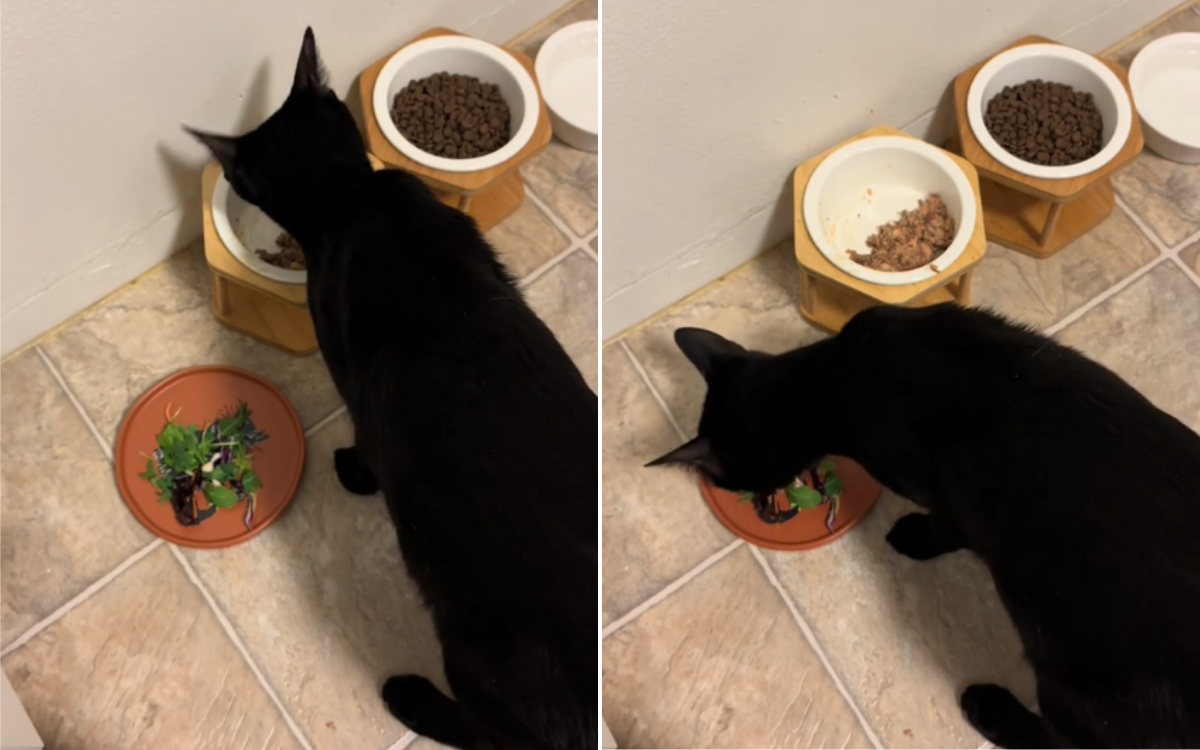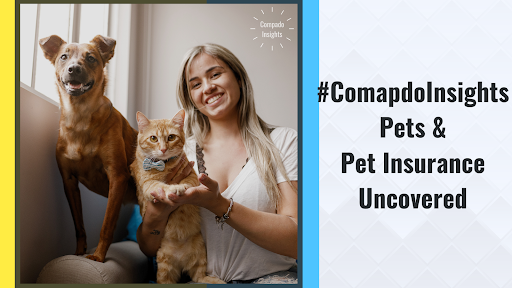A rescue cat refuses to eat his food, unless his owner serves it up with a side salad.
Dina Moeller, from Boston, Massachusetts, told Newsweek that, from the moment she adopted Shaggy as a tiny kitten from the Northeast Animal Shelter in Salem in May 2021, she could tell he had an unusual relationship with food.
“I noticed right away that he was really into whatever I was eating,” Moeller told Newsweek. “I had eaten a chicken parmigiana sandwich while he was sleeping. When he woke up, I guess he could still smell it and angrily screamed at me for 20 minutes!”
Moeller had lost her beloved 21-year-old cat a month earlier but, with the pandemic still in full swing, was eager to adopt another feline companion. She originally had her heart set on a gorgeous tortoiseshell-colored cat she saw on the shelter’s website.
“I figured this kitten would be immediately snatched up since he was so cute,” Moeller said. “I did notice that, in the background of the pic, there was a black kitten, and I wondered about him, too.” That black cat ended up being Shaggy.

the_shags2021
“It was meant to be,” Moeller said. When first adopting Shaggy, she had noticed he was labeled as shy and fearful. That didn’t deter her one bit, though, and rightly so.
“Once home and released from his carrier, he promptly climbed up a huge Mass Cane tree I had in my dining room and swung from the branches,” Moeller said. “He never displayed any signs of being shy or fearful since then.”
Shaggy has certainly never been fearful about letting her know what he wants for dinner either, something Moeller suspects is born out of a number of contributing factors.
For example, early on, she discovered Shaggy had worms and required a six-week course of medicine to eradicate them. “During that time, I had to feed him plain chicken and rice, and that really boosted his demands for human food,” Moeller said.
Even after that, Moeller struggled to find a cat food that didn’t cause havoc with Shaggy’s digestive system. “It was around that time he started stealing my salad ingredients as I was prepping dinner,” she said. “I was forever asking Siri to Google if a cat can eat things like lettuce, tomatoes, carrots, kale, avocados, etc. and started putting some of it in his dish.”
Shaggy’s stomach issues soon cleared up as a result of his salad consumption, too.
In a piece for the VCA, the animal hospitals group, veterinarians Krista Williams and Robin Downing stressed the importance of resisting “the temptation to begin feeding human food willy-nilly from the table.”
They wrote: “Once human food is given like this, it becomes much more difficult to transition back to balanced cat foods. It is actually quite difficult to balance a cat’s long-term nutrition when feeding them homemade food.”
However, Moeller said Shaggy’s food issues began before he came into her care. “His paperwork said he came from a shelter in Mississippi. I suspect he came from a feral colony and possibly lost his mom,” she added. “Maybe that’s why he is attracted to atypical foods; perhaps it’s all he had to eat.”
In any case, Moeller is always careful to make sure everything he eats is suitable for cats. “Most times, red butter lettuce or kale is in it,” she said. “But if I’m either making a salad or getting one from a salad bar, I’ll give him other things like tomatoes, cucumbers, carrots, red cabbage and, on rare occasion, avocado. He also adores watermelon and cantaloupe in the summer and pumpkin seeds in the fall.”
Moeller is also keen to stress that Shaggy’s not entirely against just eating straight cat food. “We go through phases,” she said. “If he gets bored with a certain wet food flavor, the salad gets him to eat it. If it’s a food flavor that he is totally into, he will be completely fine without lettuce on the side. If it’s not his favorite and there isn’t lettuce on the side, he will go on a little food strike.”
The only problem is that Shaggy’s interest in food doesn’t end with salad. Moeller said: “He has tried to steal, or successfully stolen, bagels, hamburgers, edamame, meatballs, cheese, baked goods like muffins, potato chips and more. He’s very much like a dog.”
Ultimately though, having consulted an expert, Moeller is not about to change things anytime soon and probably couldn’t even if she wanted to. “I’ve discussed this with my vet, and she also has a pet that also had feral origins, and he does the same thing,” Moeller said. “I guess if it’s programmed into you at an early age that you might never eat again, old habits die hard. As long as I make sure he’s not eating anything like chocolate, raisins, grapes or anything from the allium family, it’s OK in moderation. He’s happy and healthy, so I just go with it. It’s very hard to change a cat.”
Do you have funny and adorable videos or pictures of your pet you want to share? Send them to [email protected] with some details about your best friend, and they could appear in our Pet of the Week lineup.
Uncommon Knowledge
Newsweek is committed to challenging conventional wisdom and finding connections in the search for common ground.
Newsweek is committed to challenging conventional wisdom and finding connections in the search for common ground.
